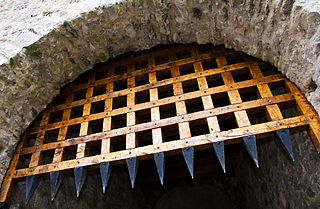
A portcullis is a heavy, vertically closing gate typically found in medieval fortifications, consisting of a latticed grille made of wood and/or metal, which slides down grooves inset within each jamb of the gateway.

The College of Arms, or Heralds' College, is a royal corporation consisting of professional officers of arms, with jurisdiction over England, Wales, Northern Ireland and some Commonwealth realms. The heralds are appointed by the British Sovereign and are delegated authority to act on behalf of the Crown in all matters of heraldry, the granting of new coats of arms, genealogical research and the recording of pedigrees. The College is also the official body responsible for matters relating to the flying of flags on land, and it maintains the official registers of flags and other national symbols. Though a part of the Royal Household of the United Kingdom, the College is self-financed, unsupported by any public funds.

Sir Albert William Woods was an English officer of arms, who served as Garter Principal King of Arms from 1869 to 1904. The Woods family has a strong tradition of service at the College of Arms. Albert Woods was the son of Sir William Woods, Garter King of Arms from 1838 until his death in 1842. Likewise, the grandson of Albert Woods was Sir Gerald Woods Wollaston, who also rose to the rank of Garter King of Arms and served there from 1930 until 1944.

Somerset Herald of Arms in Ordinary is an officer of arms at the College of Arms in London. In the year 1448 Somerset Herald is known to have served the Duke of Somerset, but by the time of the coronation of King Henry VII in 1485 his successor appears to have been raised to the rank of a royal officer, when he was the only herald to receive coronation liveries.

Windsor Herald of Arms in Ordinary is an officer of arms at the College of Arms in London.
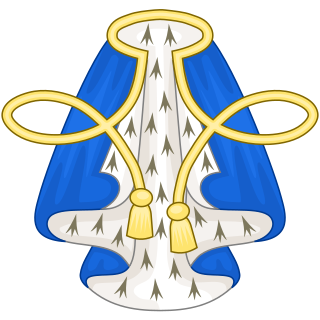
Bluemantle Pursuivant of Arms in Ordinary is a junior officer of arms of the College of Arms in London. The office is reputed to have been created by King Henry V to serve the Order of the Garter, but there is no documentary evidence of this. There is, however, mention of an officer styled Blewmantle going to France in 1448. The first Bluemantle to be mentioned by name is found in a record from around 1484. The badge of office, probably derived from the original blue material of the Order of the Garter, is blazoned as A Blue Mantle lined Ermine cords and tassels Or.

Rouge Dragon Pursuivant of Arms in Ordinary is a junior officer of arms of the College of Arms, instituted by Henry VII on 29 October 1485, the eve of his coronation, in reference to the royal badge, the red dragon of Cadwaladr.

Fitzalan Pursuivant of Arms Extraordinary is a current officer of arms in England. As a pursuivant extraordinary, Fitzalan is a royal officer of arms, but is not a member of the corporation of the College of Arms in London. As with many other extraordinary offices of arms, Fitzalan Pursuivant obtains its title from one of the baronies held by the Duke of Norfolk, Earl Marshal of England; the appointment was first made for the coronation of Queen Victoria in 1837. The badge of office was assigned in 1958 and is derived from a Fitzalan badge of the fifteenth century. It can be blazoned An Oak Sprig Vert Acorns Or, but is also recorded as A Sprig of Oak proper.
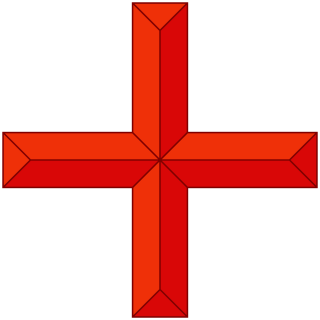
Rouge Croix Pursuivant of Arms in Ordinary is a junior officer of arms of the College of Arms. He is said to be the oldest of the four pursuivants in ordinary. The office is named after St George's Cross which has been a symbol of England since the time of the Crusades.

Unicorn Pursuivant of Arms in Ordinary is a current Scottish pursuivant of arms in Ordinary of the Court of the Lord Lyon.
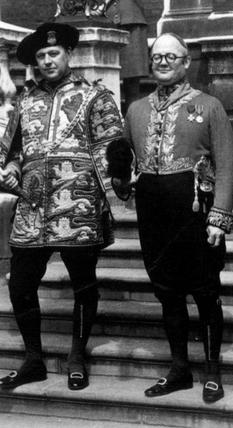
Sir Alexander Colin Cole was a long serving officer of arms at the College of Arms in London. Eventually, he would rise to the rank of Garter Principal King of Arms, the highest heraldic office in England and Wales.
Sir Henry Farnham Burke, (1859–1930) was a long-serving Anglo-Irish officer of arms at the College of Arms in London.
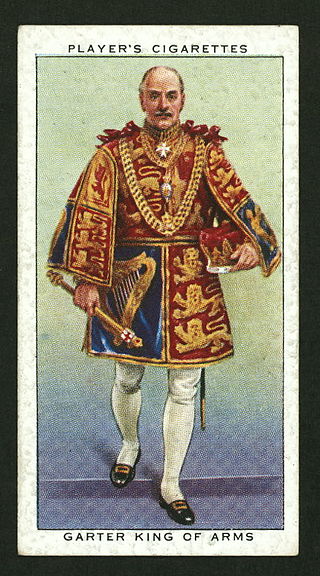
Sir Gerald Woods Wollaston was a long-serving officer of arms at the College of Arms in London. Wollaston's family had a firm tradition at the College of Arms. Wollaston's great-grandfather was Sir William Woods, Garter Principal King of Arms from 1838 until his death in 1842. His grandfather was Sir Albert William Woods who held the same post from 1869 to 1904.

Sir Algar Henry Stafford Howard was a senior British Army officer and long-serving officer of arms at the College of Arms in London. He served as the Garter Principal King of Arms from 1944 to 1950 before retiring. He was the third consecutive Fitzalan Pursuivant of Arms Extraordinary to attain the highest rank at the College of Arms.

William Alexander Lindsay was a long-serving officer of arms at the College of Arms in London. Lindsay was the son of Hon. Colin Lindsay son of James 7th Earl of Balcarres, 24th Earl of Crawford and Lady Frances Howard, daughter of the Earl of Wicklow. On 7 May 1870, he married Lady Harriet Hamilton-Gordon, a daughter of the 5th Earl of Aberdeen and Mary Baillie. His heraldic career began in 1882 when he was appointed Portcullis Pursuivant in Ordinary at the College of Arms. He was promoted to the office of Windsor Herald of Arms in Ordinary in 1894. In 1919, he was promoted Norroy King of Arms after Charles Athill was promoted to Clarenceux King of Arms. Three years later, Lindsay followed Athill to the role of Clarenceux on Athill's death. Lindsay held the office from 1922 until his own death in 1926.
Sir John Dunamace Heaton-Armstrong was a long-serving English officer of arms at the College of Arms in London.
Thomas Morgan Joseph-Watkin (1856–1915) was a barrister and long-serving officer of arms at the College of Arms in London. Having spent much of his early life as a cowboy in Texas, Joseph-Watkin began his career at the College of Arms as Portcullis Pursuivant of Arms in Ordinary in April 1894. On 20 June 1913, Joseph-Watkin was appointed Chester Herald of Arms in Ordinary to replace Henry Murray Lane. This appointment lasted until Joseph-Watkin's death on 31 July 1915.

Timothy Hugh Stewart Duke, FSA is an officer of arms at the College of Arms in London.
Blanche Lyon Pursuivant of Arms in Ordinary was an English office of arms created during the reign of King Edward IV.
Major Charles Murray Kennedy St Clair, 17th Lord Sinclair, CVO, DL was a Scottish peer who spent his entire life in the service of the Crown; as a soldier, an officer of arms, an equerry in the Queen Mother's Household, a representative peer and as a Lord Lieutenant.




















































